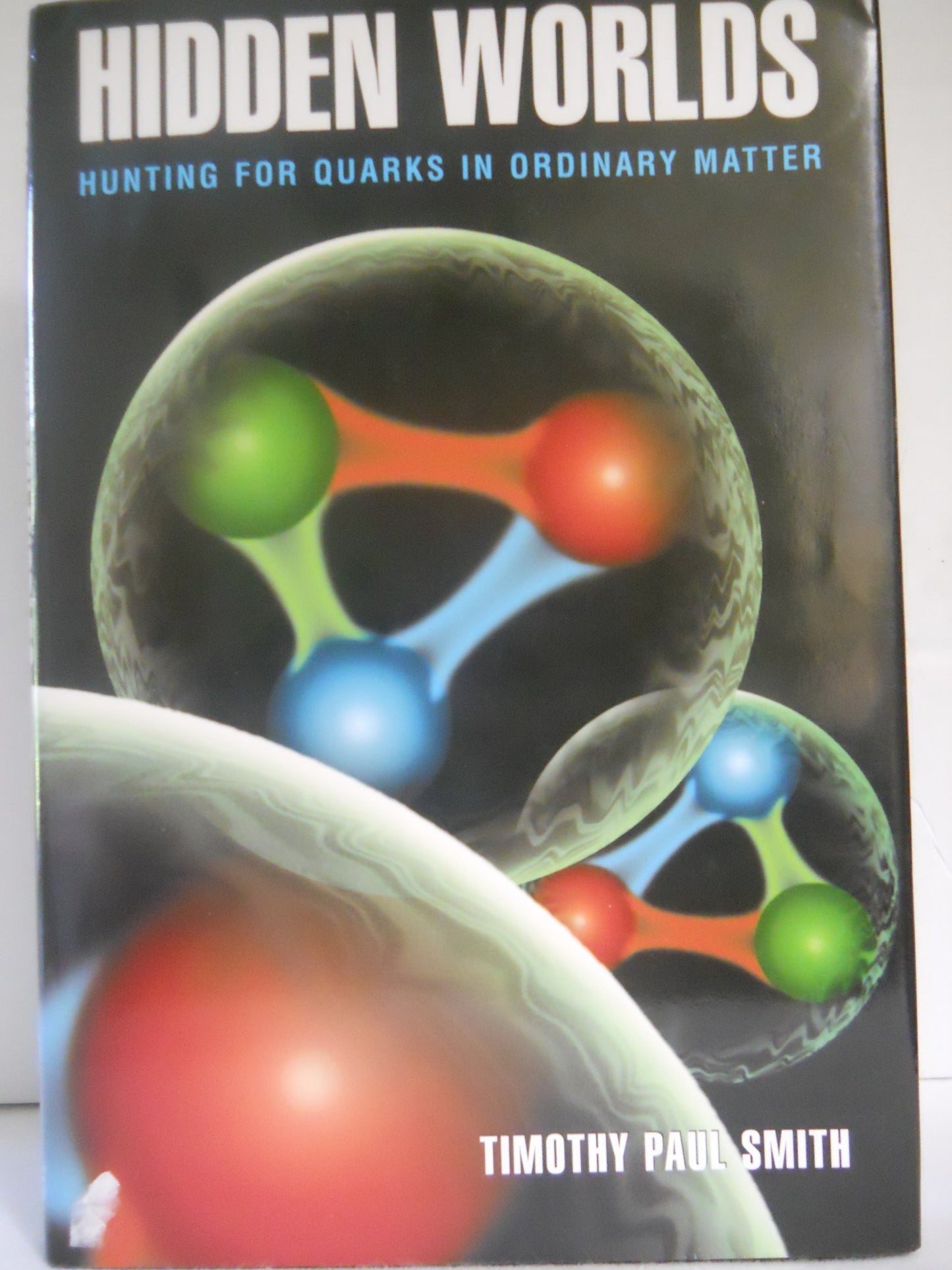Princeton University Press
Hidden Worlds: Hunting for Quarks in Ordinary Matter
Regular price
$9.95 USD
Regular price
Sale price
$9.95 USD
Unit price
per
Shipping calculated at checkout.
Couldn't load pickup availability
Title: Hidden Worlds: Hunting for Quarks in Ordinary Matter
Author: Timothy Paul Smith
ISBN: 9780691057736
Publisher: Princeton University Press
Published: 2002
Binding: Hardcover
Language: English
Condition: Used: Near Fine
Excellent, unmarked copy with little wear and tight binding. We ship in recyclable American-made mailers. 100% money-back guarantee on all orders.
A 1692036
Publisher Description:
Author: Timothy Paul Smith
ISBN: 9780691057736
Publisher: Princeton University Press
Published: 2002
Binding: Hardcover
Language: English
Condition: Used: Near Fine
Excellent, unmarked copy with little wear and tight binding. We ship in recyclable American-made mailers. 100% money-back guarantee on all orders.
A 1692036
Publisher Description:
No one has ever seen a quark. Yet physicists seem to know quite a lot about the properties and behavior of these ubiquitous elementary particles. Here a top researcher introduces us to a fascinating but invisible realm that is part of our everyday life. Timothy Smith tells us what we know about quarks--and how we know it.
Though the quarks that make science headlines are typically laboratory creations generated under extreme conditions, most quarks occur naturally. They reside in the protons and neutrons that make up almost all of the universe's known matter, from human DNA to distant nebulae, from books and tables to neutron stars. Smith explains what these quarks are, how they act, and why physicists believe in them sight unseen. How do quarks arrange themselves? What other combinations can nature make? How do quarks hold nuclei together? What else is happening in their hidden worlds? It turns out that these questions can be answered using a few simple principles, such as the old standby: opposites attract. With these few principles, Smith shows how quarks dance around each other and explains what physicists mean when they refer to "up" and "down" quarks and talk about a quark's color, flavor, and spin. Smith also explains how we know what we know about these oddly aloof particles, which are eternally confined inside larger particles. He explains how quark experiments are mounted and how massive accelerators, targets, and detectors work together to collect the data that scientists use to infer what quarks are up to. A nonmathematical tour of the quark world, this book is written for students, educators, and all who enjoy scientific exploration--whether they seek a taste of subnuclear physics or just wonder about nature on the smallest of scales.
